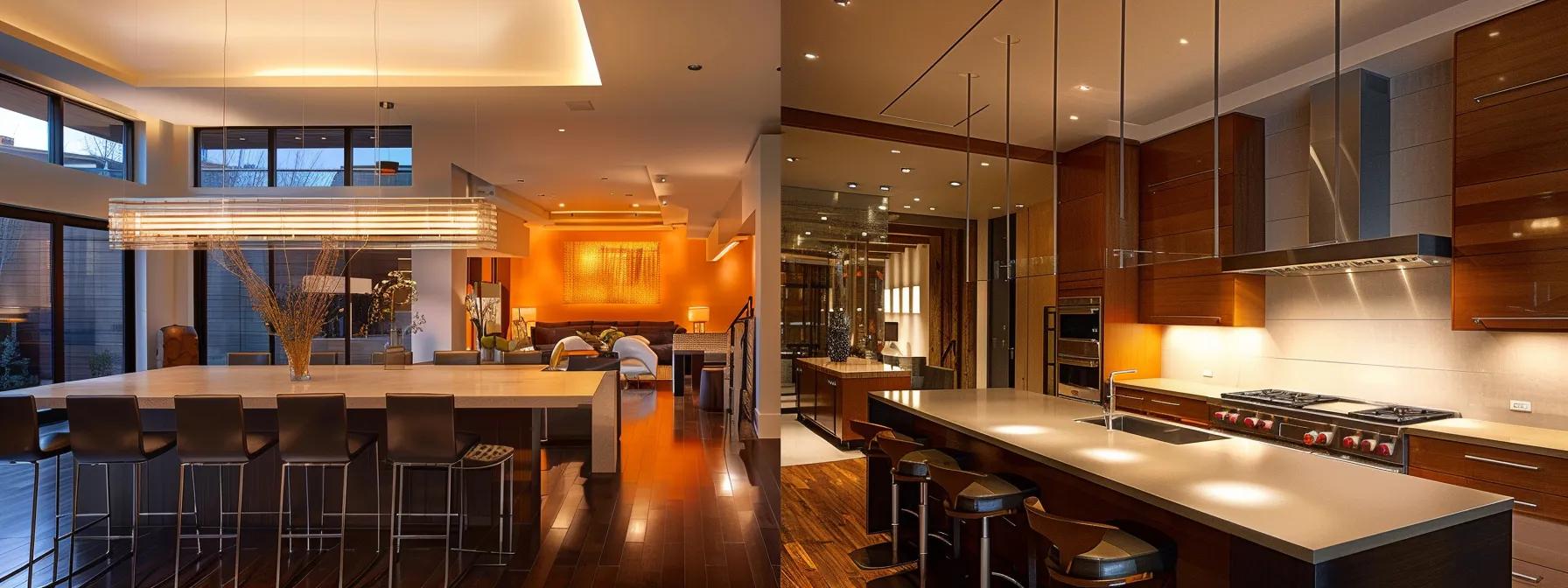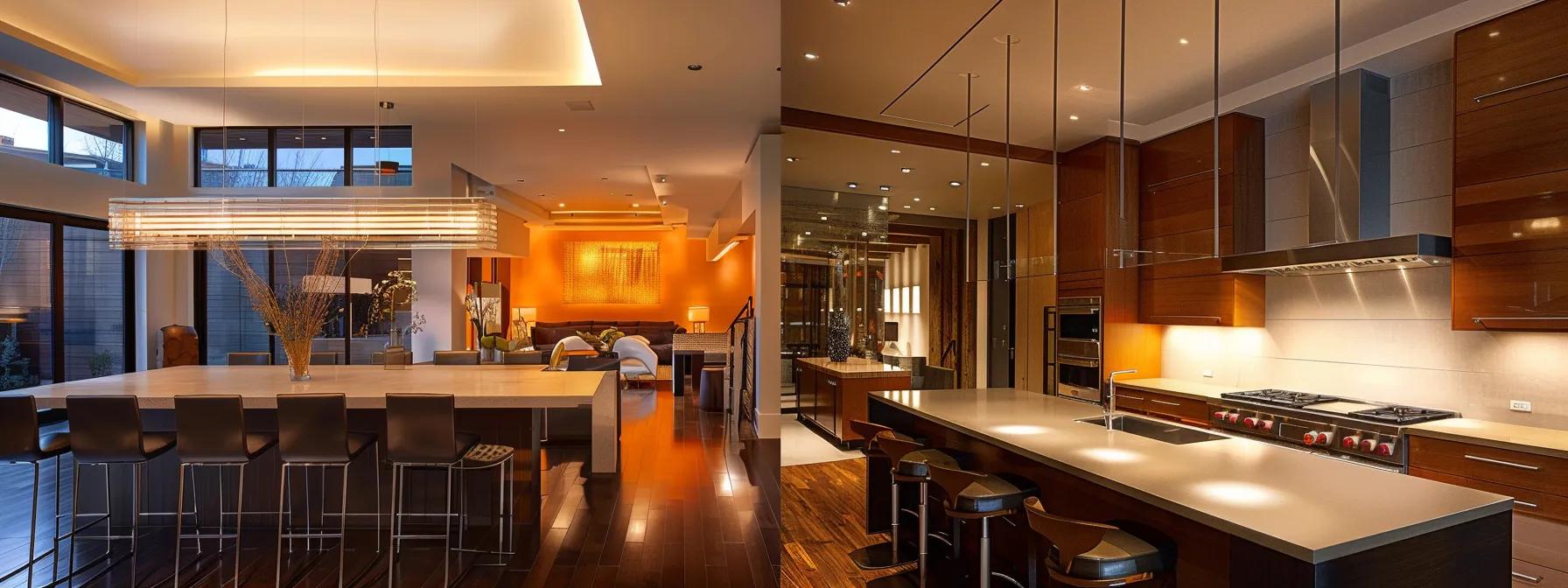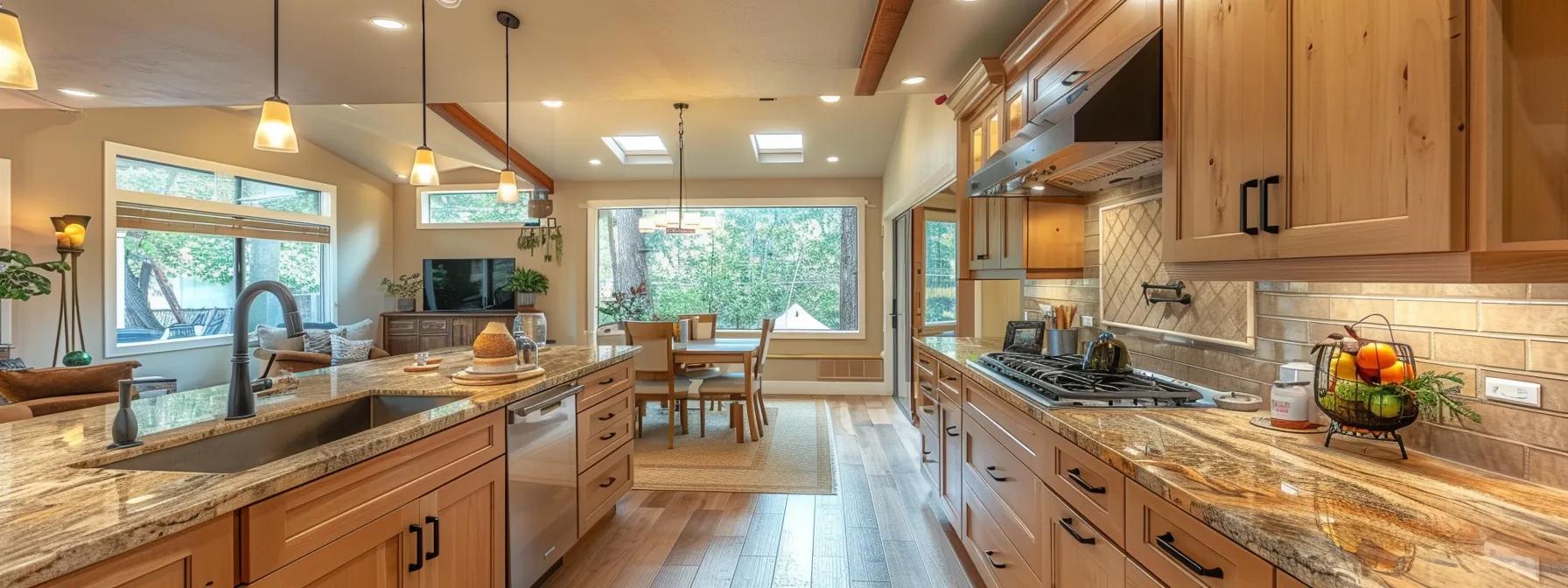


Eco-friendly kitchen design begins with understanding how to choose colors that not only appeal aesthetically but also promote sustainability and reduce harmful emissions. Homeowners are increasingly opting for paint selections with low volatile organic compounds (VOCs) that minimize indoor air pollution and promote healthier living environments. Low-VOC and natural paint selections use plant-based binders and renewable pigments, which significantly reduce the emission of toxins compared to traditional paints. Moreover, using natural pigments extracted from minerals, plants, and earth can imbue a kitchen with warm, organic hues that resonate with nature.
Identifying low-VOC and natural paint selections is essential to creating a sustainable kitchen space. Many eco-friendly brands incorporate recycled materials and renewable resources into their product lines. Colors literally derived from nature, such as clay, stone, and botanical extracts, not only offer vibrant yet understated palettes but also align with minimal environmental impact. Homeowners are now sourcing colors derived from renewable and recycled materials to lower their carbon footprint. This innate connection between color and nature creates a visual harmony that enhances a kitchen’s atmosphere while supporting eco-friendly values.
Recognizing the health advantages of non-toxic kitchen hues is equally important. Research indicates that shifting to non-toxic paints can reduce the incidence of respiratory issues, headaches, and fatigue associated with prolonged exposure to chemical-laden products. Homeowners benefit from healthier indoor air quality, which is particularly important in kitchens that combine cooking emissions with potential VOC off-gassing. Certifications for green color products, such as GREENGUARD and EPA’s WaterSense, offer consumers confidence in their purchasing decisions.
Locating certifications for green color products involves consulting certifying agencies and sustainability ratings to ensure that the kitchen’s color choices meet strict environmental and health standards. By opting for certified products, homeowners can trust that the entire lifecycle of the paint—from production to application—is designed to be eco-conscious. This informed decision-making supports sustainable practices while enhancing the overall aesthetic and safety of the kitchen. Ultimately, eco-friendly color choices empower homeowners to marry design with environmental care, making it easier than ever to create a kitchen that is both beautiful and responsible.
Current trends in eco-kitchen design are shaping how homeowners approach their remodels with an eye toward sustainability. Popular earth tones have emerged as a preferred choice, offering a natural feel that reflects the organic world outside. Contemporary culinary areas often feature rich hues like soft taupe, deep umber, and muted grays that not only evoke serenity but also serve as neutral backdrops for accent pieces. These colors are celebrated for their ability to create complex layers of design while remaining timeless.
Applying popular earth tones in contemporary culinary areas enables homeowners to tap into the biophilic design ethos, where connection with nature is paramount. Incorporating greens and blues reminiscent of forests and water bodies brings an innate sense of calm and balance. These hues are particularly effective when paired with sustainable materials like reclaimed wood and natural stone, creating a visual appeal that is both modern and environmentally responsible. Homeowners are advised to select shades that complement their cabinetry and countertops, ensuring that the overall color scheme remains harmonious throughout the space.
Incorporating biophilic design principles with greens and blues is another trend influencing modern eco-kitchen design. These colors draw inspiration from natural landscapes and induce a sense of tranquility and wellness, which is critical in spaces where family meals and daily tasks occur. The use of muted pastels, such as soft powder blue or gentle beige, further enhances the eco-aesthetic by providing serene, subtle complements to bolder elements within the kitchen. Homeowners appreciate the potential of these hues to foster relaxation while maintaining a refined appearance.
Utilizing muted pastels for a gentle eco-aesthetic helps in balancing bold sustainable colors against neutral foundations. For instance, integrating pastel accents via decorative accessories or painted feature walls can soften the visual impact of more vivid colors, creating a layered design that exudes sophistication and environmental mindfulness. Anticipating future movements in eco-conscious kitchen color trends, many designers propose that emerging color palettes will increasingly reflect the broader shift toward natural, sustainable living. Overall, the trend is toward a harmonious integration of modern design elements and environmentally friendly practices, establishing kitchens as spaces of beauty and responsible living.
When selecting sustainable hues for a kitchen, it is paramount to evaluate how natural light influences color appearance. The amount and direction of natural light dramatically alter the perception of colors, making it essential for homeowners to consider the placement of windows, skylights, and reflective surfaces in their kitchens. Bright, sunlit kitchens may enhance cooler tones like slate blue or charcoal, whereas kitchens with limited daylight might benefit from warmer hues, such as butcher block-inspired amber or subtle taupe. This dynamic interplay of light and color not only accentuates the design but also reinforces sustainable choices.
Aligning colors with kitchen dimensions and configuration is another crucial consideration. Small kitchens may look more spacious with lighter shades, while larger spaces can accommodate richer, dark hues without feeling overwhelming. Homeowners must develop mood boards using sustainable color swatches to visualize how various tones will interact within the space. By experimenting with sample panels or digital renderings, one can find the perfect balance between aesthetic appeal and the psychological impact of colors. This meticulous planning ensures that the final design is both trendy and practical.
Developing mood boards using sustainable color swatches combines creativity with practicality. Homeowners are encouraged to choose colors that complement their existing architectural elements and natural textures. Expressing personal style via eco-mindful color preferences allows an individual’s taste to shine while adhering to principles of sustainability. For example, pairing natural wood grains with earthy greens can evoke a rustic yet refined look, while subtle hints of metallic copper may add sophistication and depth. This process allows for experimentation and adaptation, ultimately leading to a kitchen design that embodies both personality and sustainable innovation.
Selecting the appropriate sustainable hues for your kitchen’s ambiance is largely about synergy—identifying colors that work well together while enhancing both form and function. Homeowners need to balance practicality with design aspirations, ensuring that every choice contributes to a cohesive look. In the process, sustainable color selection becomes a fundamental pillar of creating an environment that nurtures both aesthetic pleasure and environmental stewardship.
Implementing eco-friendly colors entails more than just painting walls—it involves a holistic approach to kitchen surfaces and components. Coating walls and ceilings with sustainable paint alternatives not only minimizes harmful emissions but also creates a backdrop that supports other design elements. These eco-friendly paints often feature formulations that yield vibrant colors while reducing the release of volatile organic compounds. Homeowners can achieve uniformity in their kitchen design by ensuring that the color choices for walls, ceilings, and even appliances are in harmony with sustainable values.
Choosing eco-aware cabinetry colors and finishes plays a vital role in eco-friendly kitchen design. Sustainable cabinetry often uses materials such as reclaimed wood, bamboo, or recycled composites. Pairing these surfaces with naturally tinted finishes—like soft beige, dusty rose, or warm umber—not only enriches the overall aesthetic but also contributes to the kitchen’s green credentials. With specialized sustainable stains and finishes available, homeowners can attain the look of classic cabinetry while ensuring that the materials used are environmentally responsible.
Opting for backsplash tiles in earth-friendly shades further reinforces a sustainable design scheme. Tiles produced from recycled materials or natural stone offer durability, ease of cleaning, and a unique textural contrast. These backsplash options come in a range of colors that mimic natural materials such as slate, granite, or even recycled glass, which can be incorporated to add depth and dimension to the kitchen area. Moreover, pairing colors with sustainable countertop selections, such as granite or quartzite that are ethically sourced, creates a holistic design that balances function with environmental impact.
Adorning with naturally colored kitchen accessories is the final stroke in implementing eco-friendly colors. Details such as pendant lights, bar stools, or decorative planters can feature finishes in complementary shades like copper, brass, or even retro-inspired emerald. These accessories serve as accent pieces that tie the kitchen design together, providing a layered look that is both modern and grounded in sustainability. When every component, from the largest surface to the smallest accessory, is chosen with environmental impact in mind, the overall design not only becomes eco-friendly but also uniquely stylish.
Achieving visual unity is essential in any kitchen design and becomes even more critical when striving for an eco-friendly kitchen. Constructing a monochromatic eco-friendly color arrangement can simplify the design process and create a sense of continuity across different surfaces. For example, a unified palette based on subtle shades of green can provide a calming backdrop that enhances natural light and architectural features. Monochromatic schemes remove visual clutter, allowing sustainable elements to stand out without overwhelming the space.
Crafting analogous color combinations with natural pigments serves as another creative pathway. When colors that are adjacent on the color wheel—such as various shades of blue and green—are used together, they create a harmonious visual flow that resonates with eco-conscious themes. This analogous approach is particularly effective in kitchens where different zones need to transition seamlessly into one another without a jarring color interruption. Homeowners can experiment with color gradients that mimic natural settings, ensuring that each component of the kitchen design complements the next.
Employing complementary eco-colors is also an effective strategy to create visual appeal and dynamic contrast. By pairing colors that are opposites on the color wheel—for instance, a muted pastel with a bolder earthy tone—designers can achieve a balance that draws the eye without compromising on harmony. Layering textures to amplify sustainable color richness further elevates the design. Textures from natural stone, reclaimed wood, and even metallic accents work together to provide a tactile experience that reinforces the visual narrative of sustainability. The interplay of textures and color not only enriches the aesthetic but also offers functional benefits, such as improved durability and ease of maintenance.
Achieving visual unity in a kitchen through nature-inspired color schemes is a process that combines artistic intuition with sustainable principles. This deliberate approach ensures that every detail—from the wall color to the smallest accessory—contributes to a cohesive whole. The final result is a kitchen design that evokes the tranquility of nature while showcasing the homeowner’s commitment to an eco-friendly lifestyle.
The selection of materials plays a pivotal role in determining the overall eco-friendly approach to kitchen design. Featuring natural wood grains for warmth and texture is one such strategy. Woods like oak, walnut, and reclaimed barn wood not only provide a rich palette of natural hues but also introduce patterns and textures that enhance the visual depth of a kitchen. These materials are chosen not only for their aesthetic appeal but also for their sustainability; responsibly sourced wood ensures that production practices are environmentally conscious. The natural grain patterns add a layer of artistic authenticity that complements modern design trends while providing a timeless backdrop.
Integrating stone and concrete elements further contributes to an environmentally responsible kitchen color scheme. Stones, whether used as countertops, backsplashes, or flooring, come in a variety of hues including slate, granite, and quartzite. These materials exude durability and are often quarried using eco-friendly methods. In many modern kitchens, concrete accents are used to introduce an industrial yet natural tone, blending well with both minimalist and rustic designs. These elements not only add color but also offer practical benefits such as heat resistance, longevity, and low maintenance, which are crucial for busy kitchen environments.
Using recycled glass to introduce subtle color notes is another innovative approach. Recycled glass tiles and countertops provide a spectrum of colors—from deep blues and greens to warm ambers—that mimic natural elements in a sustainable way. The process of recycling and repurposing glass dramatically reduces waste, making this option a standout choice for homeowners keen on eco-friendly design. Moreover, the reflective qualities of recycled glass can enhance lighting and add visual interest to the space, contributing to both functionality and aesthetics.
Picking metal finishes that coordinate with eco-palettes also enhances the kitchen’s overall design. Metals like brushed stainless steel, copper, and even recycled iron offer a sleek finish that can be harmoniously paired with natural pigments. These materials are often used in appliances, fixtures, and decorative hardware, acting as vital accents that balance organic textures with modern industrial style. Coordinated metal finishes contribute to an integrated look that not only elevates visual unity but also reinforces the sustainable ethos.
The contribution of materials to an eco-friendly kitchen color approach is ultimately about synergy: ensuring every chosen material complements the selected color palette while adhering to sustainable principles. When natural wood grains, stone accents, recycled glass, and carefully picked metal finishes combine, they create a multi-layered design that exudes sophistication and environmental responsibility. Homeowners benefit from enhanced durability, appealing textures, and a strong connection to nature—a true testament to innovative, sustainable remodeling.
Eco-friendly colors for sustainable kitchen design empower homeowners to align aesthetics with environmental responsibility. The careful selection of low-VOC paints, natural pigments, and sustainable materials creates spaces that are both visually appealing and health-conscious. Each step—from selecting eco-friendly surfaces to implementing nature-inspired color schemes—contributes to a kitchen that fosters well-being and sustainability. Ultimately, this thoughtful approach transforms kitchens into havens of style and eco-awareness, inviting homeowners to live more harmoniously with nature.
Q: What makes low-VOC paints important for eco-friendly kitchens? A: Low-VOC paints minimize the release of harmful chemicals into the indoor air, making kitchens healthier. They support sustainable practices by using natural ingredients and reducing environmental impact.
Q: How do natural pigments contribute to kitchen design? A: Natural pigments, derived from minerals and plants, offer warm, organic hues that enhance the connection between the kitchen and nature. They provide a timeless appeal that complements eco-friendly materials.
Q: Can sustainable colors affect the overall ambiance of a kitchen? A: Yes, sustainable colors impact lighting, mood, and spatial perception. By selecting hues tailored to natural light and kitchen dimensions, homeowners can create inviting, harmonious spaces.
Q: Why is material selection crucial in eco-friendly kitchen design? A: Material selection ensures that the design is both stylish and sustainable. Using reclaimed wood, natural stone, and recycled glass, for example, reinforces the eco-friendly theme while providing durability and texture.
Q: How can homeowners ensure their kitchen design is both sustainable and modern? A: By integrating eco-friendly colors with sustainable materials and innovative design elements, homeowners can create kitchens that balance modern aesthetics with environmental mindfulness. This approach enhances functionality, durability, and overall appeal.
